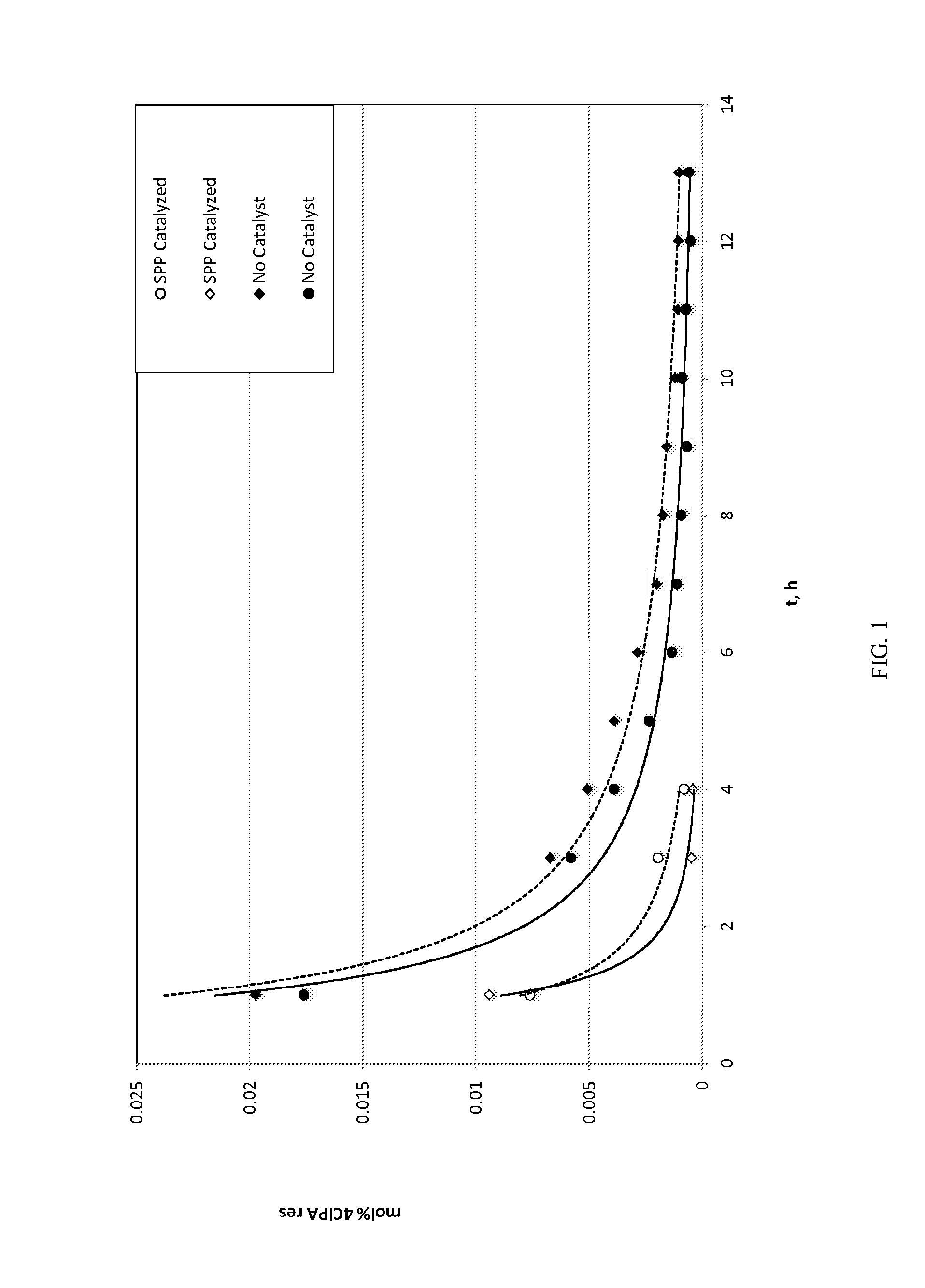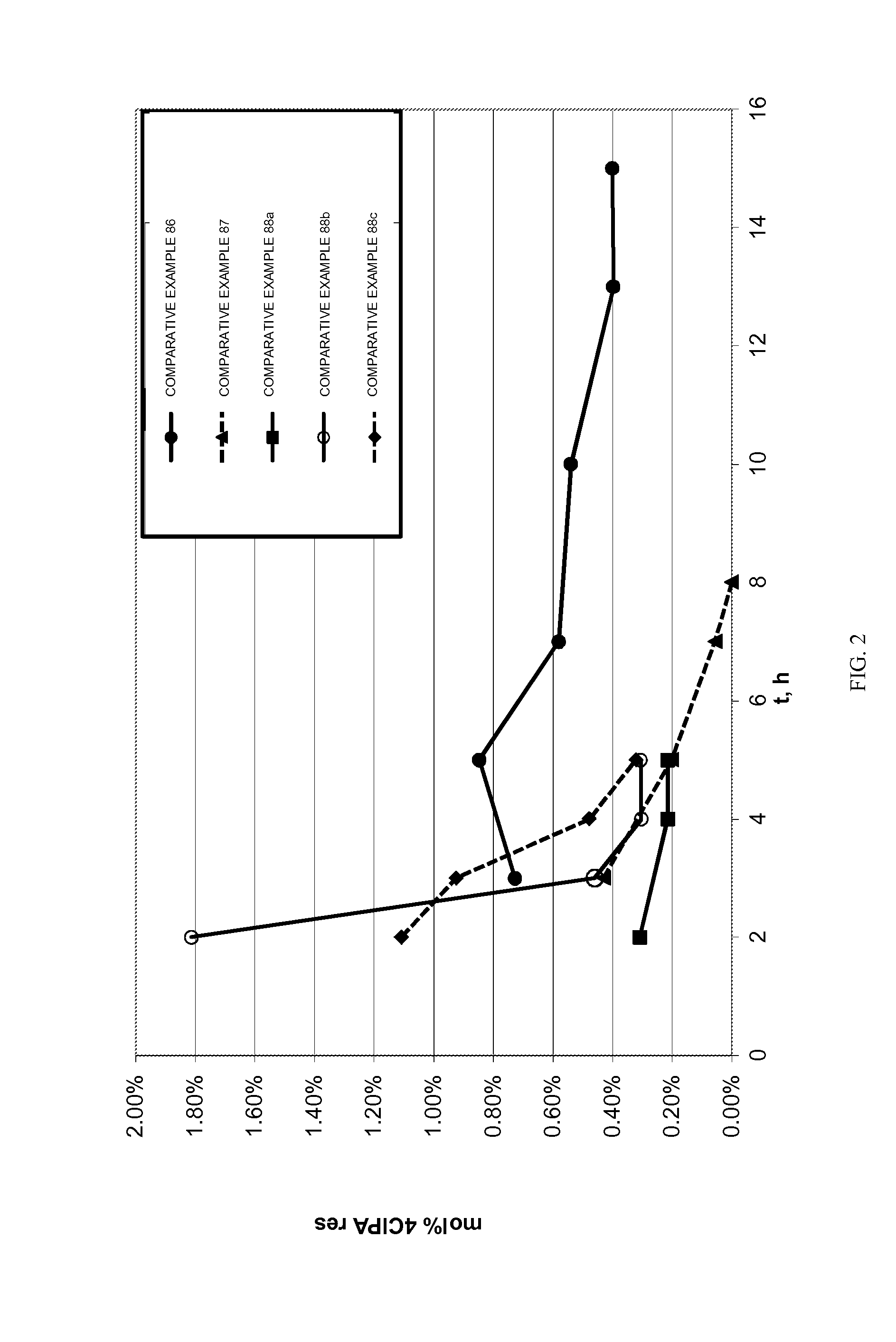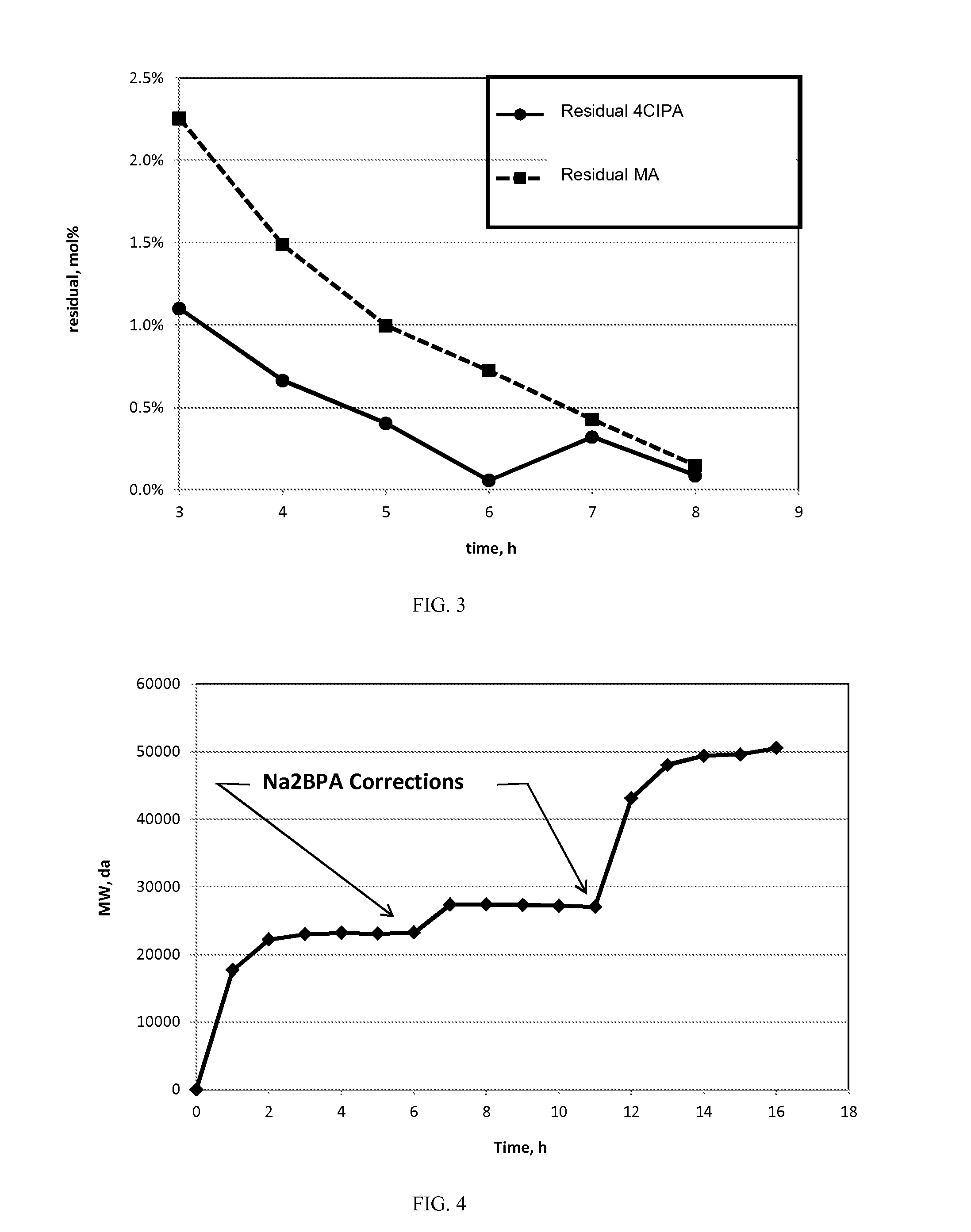Polyetherimide compositions, methods of manufacture, and articles formed therefrom
- Summary
- Abstract
- Description
- Claims
- Application Information
AI Technical Summary
Benefits of technology
Problems solved by technology
Method used
Image
Examples
examples
Materials
[0131]The materials in Table 1 were used or made in the following Examples and Comparative Examples.
TABLE 1AcronymDescriptionSourcePAPhthalic anhydride3-ClPA3-Chlorophthalic anhydrideSABIC4-ClPA4-Chlorophthalic anhydrideSABICClPAMixture of 3-chlorophthalic anhydride and 4-SABICchlorophthalic anhydrideClPAMI1,3-bis[N-(4-chlorophthalimido)]benzeneExamplesMono-Mixture of 1-amino-3-N-(4-chlorophthal-ExamplesClPAMIimido)benzene, 1-amino-3-N-(3-chlorophthal-(MA)imido)benzenemPDmeta-Phenylene diamineDuPontDDA4,4′-diaminodiphenyl sulfoneAtulBPA2,2-Bis(4-hydroxyphenyl)propane, (BisphenolHexionA)BPANa2Bisphenol, disodium saltSABICBPADABisphenol A dianhydrideSABICPCPpara-Cumyl phenolSABICPEIPolyetherimideExampleso-DCBortho-DichlorobenzeneFischerHEGClHexaethylguanidinium chlorideAtul Ltd.SPPSodium phenylphosphinateAkzoTPPBrTetraphenylphosphonium bromideSigma-AldrichC6B1,6-Bis(tributylammonium)-hexane dibromideSigma-AldrichPyrEHCl4-(N,N-dimethyl)-2-ethylhexylpyridiniumSigma-chlorideAldr...
example 2
Polymerization with HEGCl as Catalyst
[0147]Following a similar procedure described in comparative example 87, the reaction flask was charged at room temperature with the same amounts of 4,4′-DDS, 3-ClPA, PA, and o-DCB. The flask was then immersed in an oil bath and gradually heated to 190° C. and then to 210° C. within 1.5 hrs during which 42 mL of o-DCB were distilled off and GPC indicated a Mw of 4.83 KD. HEGCl catalyst was added (about 58 mg as a 17% solution in o-DCB, 0.5 mol % based on DDS charge). Heating was continued at reflux for 10 hrs. GPC measurement of samples drawn at 7 and 10 hrs showed Mw of 43.83 and 43.89 KD respectively indicating that the reaction was complete in 7 hrs.
example 3
Polymerization with HEGCl as Catalyst
[0148]Following a similar procedure as described in comparative example 88, the reaction flask was charged at room temperature with the same amounts of 4,4′-DDS, 3-ClPA, PA, and o-DCB. The flask was then immersed in an oil bath and gradually heated to 190° C. and then to 210° C. within 1.5 hrs during which 43 mL of o-DCB were distilled off. HEGCl catalyst was added (about 23 mg as a 17% solution in o-DCB, 0.2 mol % based on DDS charge). Heating was continued at reflux for 10 hrs. GPC measurement of samples drawn at 7, 8.5, and 10 hrs showed Mw of 39.19, 40.79, and 40.04 KD respectively indicating that the reaction was complete in 8.5 hrs.
[0149]The Mw build over time for Comparative Example 1 and Examples 2 and 3 is shown numerically in Table A and graphically in FIG. 9.
TABLE AMw Build in the Polycondensation of BPADA with DDS.ComparativeExample 2Example 3Example 1HEGCl atHEGCl atUncatalyzed0.5 mol %0.2 mol %TimeTimeTime(hr)Mw(hr)Mw(hr)Mw070130482...
PUM
| Property | Measurement | Unit |
|---|---|---|
| Fraction | aaaaa | aaaaa |
| Fraction | aaaaa | aaaaa |
| Time | aaaaa | aaaaa |
Abstract
Description
Claims
Application Information
 Login to View More
Login to View More - R&D
- Intellectual Property
- Life Sciences
- Materials
- Tech Scout
- Unparalleled Data Quality
- Higher Quality Content
- 60% Fewer Hallucinations
Browse by: Latest US Patents, China's latest patents, Technical Efficacy Thesaurus, Application Domain, Technology Topic, Popular Technical Reports.
© 2025 PatSnap. All rights reserved.Legal|Privacy policy|Modern Slavery Act Transparency Statement|Sitemap|About US| Contact US: help@patsnap.com



